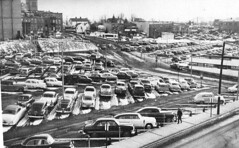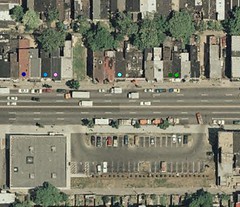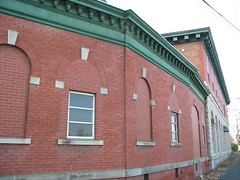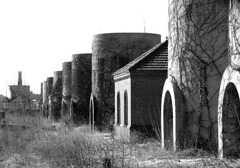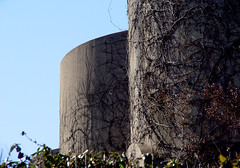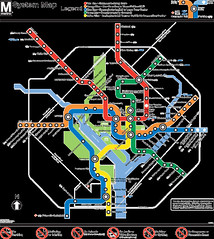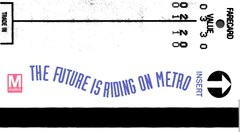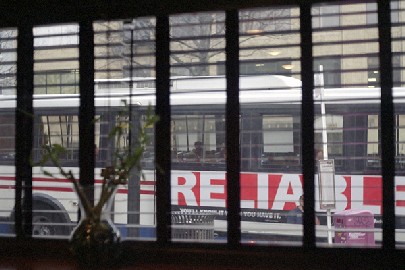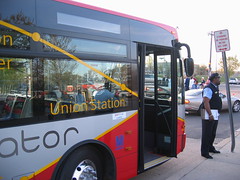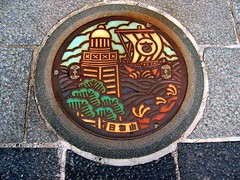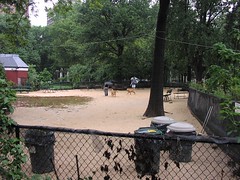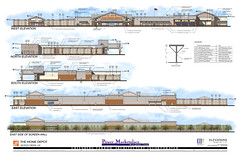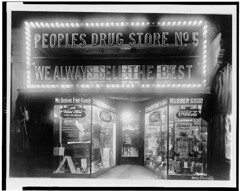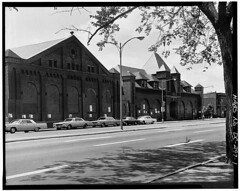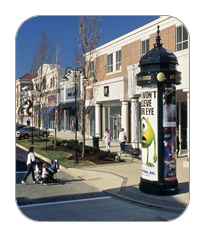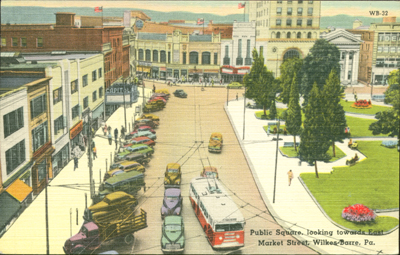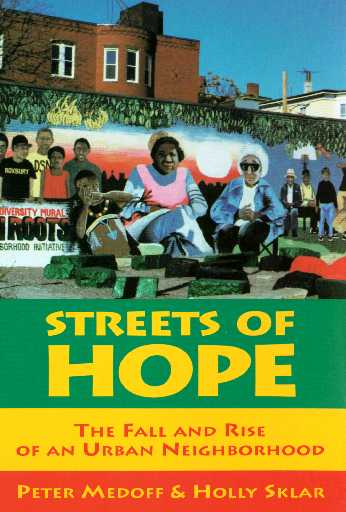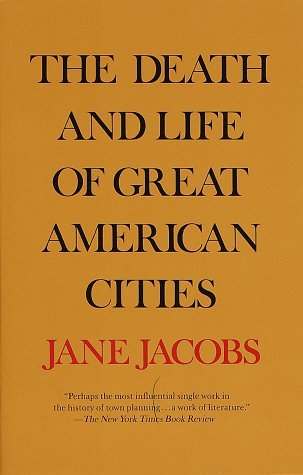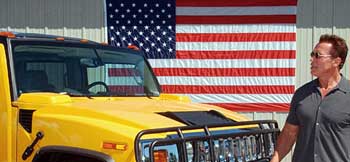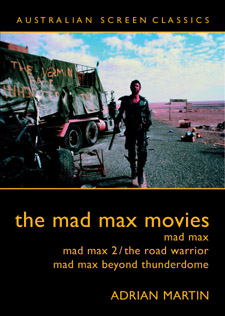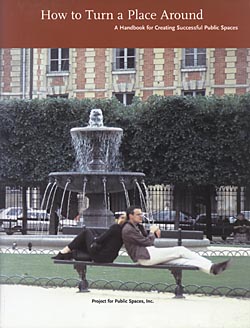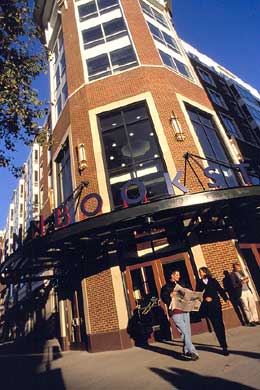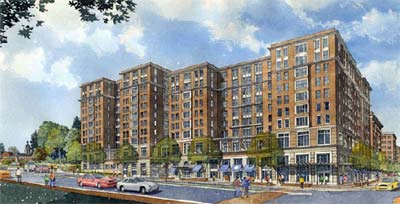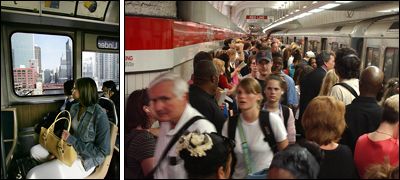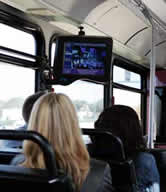Retail Entertainment Part 2
In February and March I wrote a bunch of entries on this, in part a response to the upcoming merger of Federated--Macy's & Bloomingdales--and the May Company--the national chain Lord & Taylor, and Hecht's, Marshall Fields, and a number of regional department stores around the country, and in recognition of the "competitive advantage" that great department stores provide to city center shopping districts (Hecht's in downtown Washington; Macy's, Bloomingdales, Barney's and others in Manhattan; Marshall Field's in Chicago, etc.)
The article below, "Get Ready for Retail Theater," is from the Marketing Profs e-newsletter. (Of course Pine and Gilmore's book The Experience Economy is still one of the best treatments of this general theme.)
____________________
Solve this real-life riddle. A 37-year-old woman's car is packed with a tub of dirty dishes, a laundry basket of stained clothes and a package of cookie dough. Where is she heading?
To her local Maytag concept store, of course, where she will test-drive a state-of-the-art dishwasher, washing machine and stove using her own dirty lasagna pan, grass-stained soccer jersey, and grandma's famous chocolate chip cookie recipe.
In early 2003, Maytag created an innovative experiential marketing strategy, whereby prospective customers would take their new, top-of-the-line appliances for an interactive "test-drive." Maytag found that customers were more interested in understanding how a product would fit into their lives than listening to a pitch about the merchandise. With the high cost of upper-end appliances, it makes perfect sense to take a potential washer/dryer for a trial spin.
See this story from USA Today.
The company also realized that the social aspect of shopping was important, too. A new environment was designed that included wider aisles, brighter décor, and kids' play areas. In the new Maytag store the ready-to-use appliances are displayed in "vignettes" of home kitchens and laundry rooms. Since 1998, Maytag has opened close to 50 interactive stores and plans to continue expanding in 2005.
Successful retail spaces create a full sensory experience. Consumers want to see, feel, touch, taste and interact with your products before they buy. Here are some strategies that will help you stage a little retail theater of your own.
1. Present a lifestyle
Display and market your products in a way that helps customers visualize the full experience and realize their lifestyle aspirations.
According to USA Today, Whole Foods grocery stores enjoyed a 15% jump in total sales last year while the average supermarket grew just 1%. Why? Whole Foods has taken the mundane task of grocery shopping to an inspiring and interactive new level. Dip a fresh strawberry in a flowing, chocolate fountain. Watch while any one of 150 fresh seafood items are prepared before your eyes. Sip a glass of pinot in the produce section.
Affirming your customers' desire to feel exclusive, indulgent or even organic and chemical-free can have major bottom-line impact.
2. Construct vignettes and suites
Create vignettes that can be merchandized and accessorized, even if your inventory is not usually displayed that way.
Pottery Barn has this concept nailed. I may be dashing in to pick up party napkins, but the room vignettes always keep me browsing and lingering. Each "scene" is so perfectly set that I always think, "Forget the napkins. I'll take that full 15 square feet."
Displays are powerful because they show you how to use the products—how they would fit into your life and make it more efficient, more comfortable and even more fun. A leather armchair that I would otherwise have ignored suddenly beckons me with a cozy cashmere blanket and a steaming americano—in a sleek new mug, of course.
3. Satisfy the senses
Multi-sensory experience and inviting design can lend a powerful competitive advantage—even in unexpected industries.
My doctor is great, but the office definitely leaves some room for improvement. Imagine a cold, square, ill-painted waiting room with hard chairs lining the perimeter. The walls are decorated with cheesy and dated artwork, last year's magazines rest on the plastic tables, and a few worn-out toys linger in the corner for kids.
My friend, on the other hand, says she waits in a softly lit reception area with warm laminate floors and current issues of her favorite magazines. The examining rooms have the same friendly feel, with flat screen computers, electronic medical charts and supplies organized in stylish stainless-steel containers.
Doctors, dentists and many other medical practitioners have firmly entered the service industry. With the rise of elective procedures such as teeth whitening, non-essential dermatological services and cosmetic surgeries, many doctors and dentists are competing for patients—and market share.
Think about it. Who do you think would feel more relaxed about seeing her doctor for an elective procedure—me, or my waits-in-comfort friend?
4. Encourage customers to sample, touch and feel
Give your customers unrestricted freedom, access and creativity with your products and you'll stand out in a crowded marketplace.
Sephora, the cosmetics mega-store, is a sampler's paradise. Unlike department store-type cosmetics counters that force shoppers to interact with a salesperson to try a specific item, Sephora is organized around freestanding racks with unrestricted access to chic brands such as Bulgari, Christian Dior, Gucci, Lancome and Calvin Klein.
Customers can roam the store and try on lipsticks, eyeliners and blushes from many different manufacturers. Strategically placed mirrors, tissues, cotton swabs, astringent and makeup remover encourage sampling. Prices, which are usually hidden in department stores, are prominently marked at Sephora.
Freed from staff paid on commission or overly eager to close a sale, shoppers often spend an hour or more trying different colors and brands until they find exactly what they like.
 Starbucks is a great proponent of sampling. See this article from Fast Company. (Photo by markane on Flickr.)
Starbucks is a great proponent of sampling. See this article from Fast Company. (Photo by markane on Flickr.)Watch the details
Whether you're dealing in appliances, medicine, home improvement, clothing or groceries, the right surroundings have an enormous impact on your customers, especially your female customers. A retail space that satisfies women's needs for engagement and plays to her heightened awareness of environment and aesthetics has a major advantage over the dingy, uninspired retail space, even if the products are fantastic. Put on a good show and watch your profits soar.
And, finally, don't forget that seemingly inconsequential details can actually make or break a sale:
-- Consider your lighting. Who wants to purchase a bathing suit after seeing your butt in a harsh, fluorescent glow?
-- Bathrooms and office spaces reflect your store's atmosphere. Make sure they're clean, well stocked, properly lit and ventilated.
-- Create amenities such as a family room or play place where dads, kids or grandparents can gather while other family members are shopping. One major interiors retailer projects a hopscotch pattern on the floor with laser lights. And voila—kids aren't tugging on your sleeve while you hunt for furniture.
-- According to America's Research Group, nearly half of a consumer's perception of a retail brand is formed in the parking lot*****. Like it or not, consumers judge your styles and your selection before they even walk through the front door, and they may just drive away if they don't like what they see.
________
**** or in urban areas, by the streets and sidewalks in front of your store. If it's dirty, people will move on...
